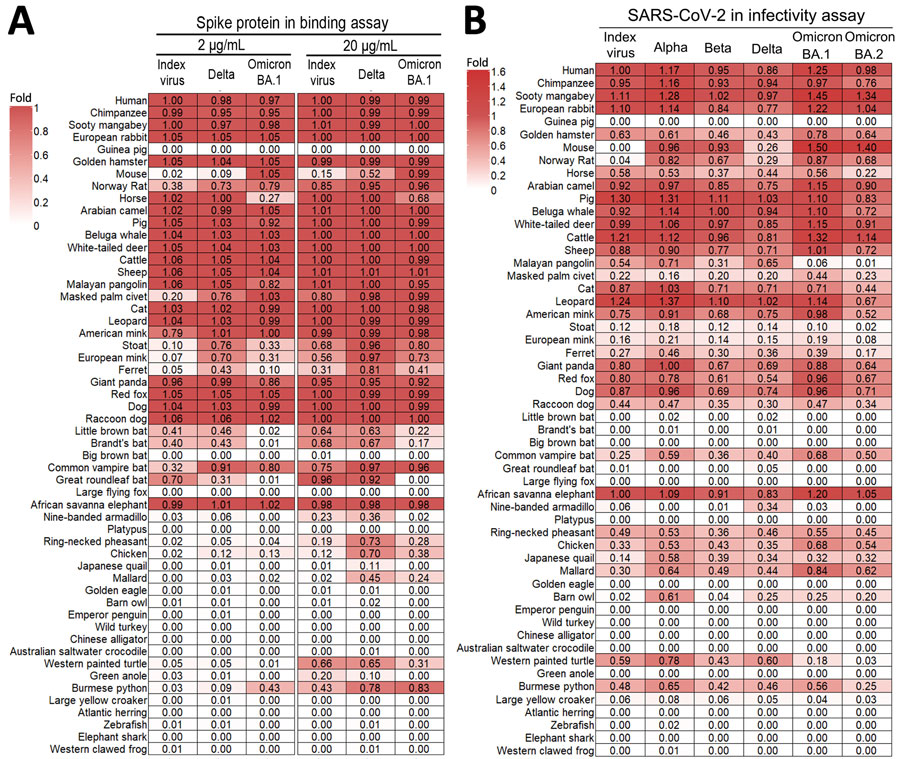Volume 31, Number 8—August 2025
Dispatch
ACE2 Receptor Usage across Animal Species by SARS-CoV-2 Variants
Figure 2

Figure 2. Heatmaps showing the binding strength of spike proteins (A) and infectivity of SARS-CoV-2 variants (B) to cells expressing ACE2 proteins from 54 animal species in study of ACE2 receptor usage across animal species by SARS-CoV-2 variants. The binding of the spike proteins to ACE2 was normalized to the reference group of index (wild-type) virus spike protein and human ACE2 cells (defined as 1) for both 2 µg/mL and 20 µg/mL spike protein concentrations. The representative data from 3 independent experiments are shown. The infectivity of SARS-CoV-2 reporter viruses was also normalized to the reference group of index virus and human ACE2 cells (defined as 1). The ratios, relative to the index virus and human ACE2 cells, are displayed as colors ranging from white to red. The experiment was performed in triplicate and the average was used in the heatmap. ACE2, angiotensin-converting enzyme 2.
1These authors contributed equally to this article.